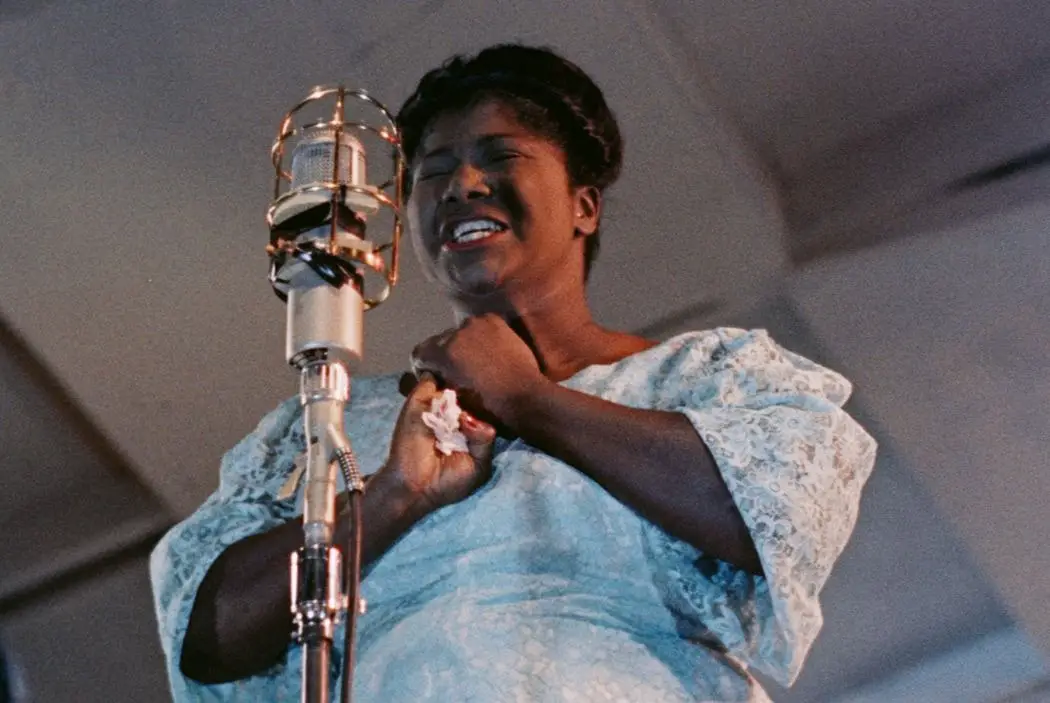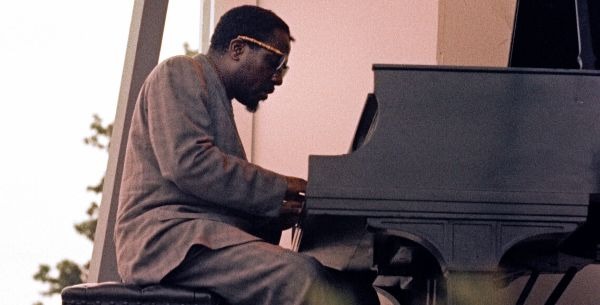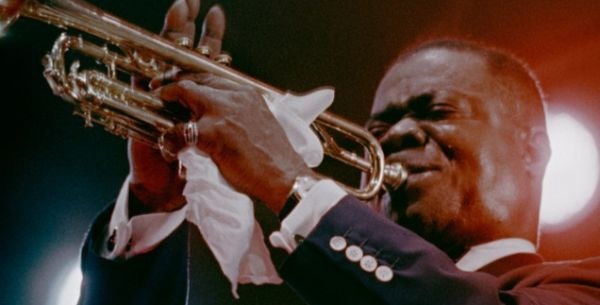JAZZ ON A SUMMER’S DAY: An Exuberant Paragon for Concert Films

Tynan loves nagging all his friends to watch classic movies…
When I was growing up there were no piano lessons and no violin, none of that jazz, if you’ll pardon the expression. And thus, not being a musical savant in my youth, I was always under the impression that jazz was boring. It wasn’t populous entertainment. Hardly the Beatles. It was something esoteric, only available to those who could unlock the key to deeper understanding.
But if you’ll allow me to run with the analogy for a moment, part of what made the Beatles so great is how they were accessible to everyone while simultaneously pushing the envelope sonically. The British Invasion that they famously spearheaded in the ’60s took our music — the American sound — and played it back at us better than we could. At the very least, they seemed to appreciate it more. Because sometimes it takes a different perspective — going somewhere else — to truly appreciate music for what it is.
For instance, in Japan where I did a brief apprenticeship in musical appreciation, jazz isn’t Kenny G in an elevator, but the likes of John Coltrane and Thelonious Monk. They are tantamount to musical gods. Beforehand, I only had a vague sense of who they were, and I’m still being trained up in the art. That’s part of what makes something like Jazz on a Summer’s Day the holy grail of Jazz movies.

One of its primary architects, fashion photographer Bert Stern, feels like a visionary, maybe an accidental one; how could he have known what he had stumbled upon? Something that feels like an altogether new visual form. It’s no small coincidence the National Film Registry preserved the movie for posterity in 1999, while also being a part of this latest refurbishing. I’m no expert, but in documenting a day in the life of the 1958 Newport Jazz Festival, this very well might be the first concert movie. And what an extraordinary resource it is.
It’s as much about the environment as it is about the music. The lazy rhythms that go into the festival, life on the water’s edge, and vacationers in the throes of summer. People watching is one of its greatest joys. There’s something so fresh and alive about seeing it in all its many colors. The faces, the streets, everything depicting the old world, but still somehow reaching into our present and feeling relatable. Elderly ladies, dogs, and little boys galloping around. Cool shades, smokes, a woman eating her ice cream bar.
Its up-close and personal perspective — with cameras placed at the hip of the performers — allows us to wholly imbibe the energy and enthusiasm coursing through every set. Stern‘s greatest fascination, and therefore our primary fascination, is in humanity, and he’s totally engaged with faces. They take up the majority of the screentime (and the screen) as artists and audience alike form a relationship of call-and-response, as edited together by Aram Avakian.
I mentioned Thelonious Monk, and he shows up early on in the proceedings, followed by the likes of Anita O’Day, Dinah Washington, and Gerry Mulligan. The evening builds on its momentum and gets better and better.
Chuck Berry and Satchmo
The Newport Jazz Festival came first, but only a few years later, Bob Dylan would take to the Newport Folk Festival only to get chastized for selling out when he infamously went electric. In this movie, we get Chuck Berry on the primetime bill. At first, it seems like a puzzling inclusion. He’s a rock star!
Surely, jazz purists would not have him. But they do, and the effusive reception the seminal rock n’ roller got with “Sweet Little Sixteen” forces me to reconsider the Dylan controversy or, at least, smooth it out a bit. Perhaps the most ardent fans turned on Dylan, but a crowd so accomodating of Berry probably had it in their hearts to forgive Dylan as well. At least the mood here feels too benevolent to totally disavow this other theory.
Of course, we get Louis Armstrong as well, one of the most prominent black entertainers of his generation. People still know his name. If he needed any more stoking of his reputation, the casual ambiance of his performance will surely do the trick. He’s disarmingly cordial, his voice as iconic as ever, and he can still play.
It was the author Hans Rookmaaker who said of Armstrong in Art Needs No Justification that it can a temptation for artists to use their talent below their level in order to make money — to be popular and acceptable. After all, the temptation to become commercial and to go pop was very great.

In his opinion, Louis Armstrong fell prey to this. Even though he was a great musician, he ended his life as a glorified clown. His point is not to totally bash Armstrong; he says entertaining people is not wrong and, furthermore, all art is a form of entertainment.
However, he does call into contention the quality of Armstrong’s later output. Meanwhile, Rookmaaker observes someone like Jelly Roll Morton, who was an early jazz visionary, subsequently sank into obscurity, though he never compromised. A dichotomy is quickly created.
I’m not well-versed in musical theory, so I cannot entirely judge, but I do recognize that Armstrong was approachable for the masses, and I do see there being inherent merit in this. He was available and if this led to his enduring popularity and success, so be it.
Armstrong probably did coast on his charm a great deal. However, he can be lauded because he had at least one crucial piece of the equation right, no doubt augmented by his unalienable talents. To go back to The Beatles analogy (and Rookmaaker), the other component involves enabling your individual artistry. You must strike a balance.
Conclusion: Jazz on a Summer’s Day
Watching this film — being allowed to sit back and let it waft over us — is a superlative pleasure. I wish there were more like it. The beauty of the film is in making music more accessible, and it functions as a vessel for renewed appreciation — appreciation of our own rich culture — while simultaneously coming to terms with the baggage that comes with it.
One of the film’s most propitious elements is the visual symbiosis or cross-pollination of black and white musicians — taking the music that traditionally came out of black culture — and enriching its legacy. It’s imperfect, but still encouraging in an era coming to terms with its societal sins, which are still percolating now over 60 years later.
It’s also an exuberant communal experience, and we feel all the subsequent shifts — from day to night — from gleeful dancing to a kind of solemn introspection at the end of the evening. But Jazz on a Summer’s Day so effectively captures the energy of the moment — making us sense the atmosphere and enjoy it vicariously — and what’s more, it doesn’t overstay its welcome.
I should revise the statement I made earlier. Jazz is not only for a select few. If this document is any indication, jazz, like all forms of music, when done well, is for all people. It’s lithe and fluid, breaking down the boundaries of genre and breaking through arcane, subjective measures of “good” and “bad,” to become something merited for its joy, its passion, and its ability to make us feel something.
I’m no jazz connoisseur nor do I claim to be, but I don’t have to be anything more than a willing participant. If Jazz on a Summer’s Day does anything, it strips away my illusions. It allows me to enjoy the moment. That is enough. I hope others are able to experience the same delight.
Perhaps The Beatles, Chuck Berry, Bob Dylan, Louis Armstrong, and Thelonious Monk have more in common than what first meets the eye. Their passion, charisma, and talents reach out and touch people. Because what is art, but something that moves us and taps into our primordial longings — those places normally guarded and reined in? Songs aren’t always just songs. They are metaphors for life and human experience. They take on significance unto themselves.
Thus, when Mahalia Jackson sings the massive audience out with the Lord’s Prayer, it’s a fitting capstone of the day’s events, bringing in a Sunday morning — a slice of Heaven on earth, if you will. What she offers is there, available for all people who are ready to receive it with joy. Because that’s what Jazz on a Summer’s Day is all about: personified joy. It’s a welcomed blast of rejuvenation.
What makes a concert film memorable? Do you consider yourself a jazz aficionado? Please let us know in the comments below.
Jazz on a Summer’s Day is being re-released by Kino Lorber on August 12th, 2020.
Watch Jazz on a Summer’s Day
Does content like this matter to you?
Become a Member and support film journalism. Unlock access to all of Film Inquiry`s great articles. Join a community of like-minded readers who are passionate about cinema - get access to our private members Network, give back to independent filmmakers, and more.
Tynan loves nagging all his friends to watch classic movies with him. Follow his frequent musings at Film Inquiry and on his blog 4 Star Films. Soli Deo Gloria.













